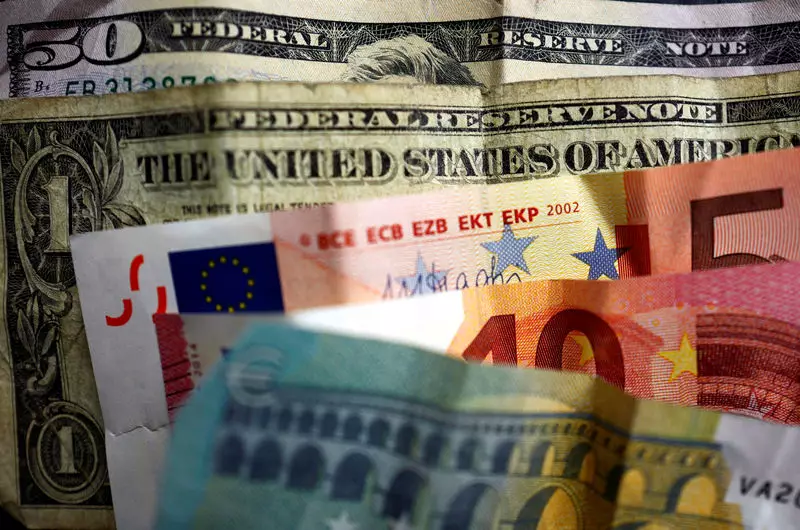In recent trading sessions, the U.S. dollar has exhibited a slight upward trajectory, demonstrating noticeable resilience against a backdrop of global economic and geopolitical complexities. Specifically, as of Thursday morning, the Dollar Index—a gauge of the greenback’s strength against a basket of six major foreign currencies—registered a modest increase of 0.1%, reaching 106.690. This performance follows a previous day of gains, pushing the dollar to near its year-high levels established last week. The present moment marks an intriguing intersection of market dynamics where geopolitical turmoil, particularly in Eastern Europe, is crucially impacting currency valuations.
Whether through military engagements or economic sanctions, the ongoing tensions between Russia and the West are reinforcing the dollar’s position as a safe-haven currency. The situation escalates further; Ukraine’s recent counteroffensives utilizing Western-sourced munitions have stirred profound unease among investors. Such geopolitical shifts not only influence immeasurable human costs but also reverberate through global financial markets—most notably, by bolstering demand for the dollar amidst uncertainty.
Moreover, significant political shifts within the U.S. remain pivotal in shaping market sentiments. The election of Donald Trump has been a catalyst for concern and speculation among traders. Anticipated fiscal policies, characterized by increased government spending, heightened tariffs on imports, and stricter immigration controls, may spur inflationary pressures. This looming inflation, coupled with a potential slowdown in monetary policy easing from the Federal Reserve, enhances the attractiveness of the dollar in the eyes of currency traders. Analysts from ING highlight that “market expectations around interest rates are being reassessed,” which leads to a recalibration of forecasts concerning imminent rate cuts by the Fed.
In light of upcoming economic indicators—most notably jobless claims data anticipated later in the trading session—the market is expected to remain vigilant. Central figures from the Fed are lined up to address the public in the ensuing days, which may further influence market confidence and currency fluctuations. Investors are eager for insights into the central bank’s commitment to maintaining a stable economy against a backdrop of potential inflationary surges.
The Euro’s Decline Reflects Broader Economic Strains
Conversely, the euro continues to demonstrate considerable weakness, trading 0.3% lower to approximately 1.0516 against the dollar. This sets the euro near its weakest point since October 2023, indicative of a broader trend linked to the escalating conflict in Ukraine and recent developments surrounding European economic health. Analysts at ING pointed out the prevailing market perception that increased military support for Ukraine by the Biden administration hints at an impending, more aggressive response from Russia. This scenario not only intensifies geopolitical risks but also triggers hesitations in the European markets where economic forecasts appear increasingly grim.
With the European Central Bank (ECB) grappling with sluggish economic growth, concerns regarding the balance of risks to inflation and growth compel ECB officials, such as Francois Villeroy de Galhau, to reassess their fiscal outlook. In a recent statement delivered in Tokyo, he acknowledged the potential impact of U.S. tariffs on economic conditions within Europe, suggesting that these strategies might not yield significant alterations in the European inflation landscape. Thus, the euro’s struggle against the dollar is intertwined with a broader narrative centered on economic policy efficacy in the eurozone.
The British pound is also feeling the strain, falling 0.2% against the dollar following figures illustrating heightened public sector net borrowing. With a reported borrowing total of £17.4 billion in October—one of the highest in recorded history—the pound’s outlook grows precarious as market participants reassess the sustainability of fiscal practices under current economic conditions.
In the Asia-Pacific region, the yen shows perhaps more resilience despite the dollar’s general strength. Factors such as Bank of Japan Governor Kazuo Ueda’s acknowledgment of the currency’s role in shaping economic forecasts might be signaling the central bank’s intent to maintain vigilance over currency fluctuations.
The current landscape highlights the intricate interdependencies between domestic policies, geopolitical tensions, and their profound implications for global currency markets. As the U.S. dollar consolidates its strength, other currencies like the euro and pound find themselves under significant pressure, reshaping investor strategies and financial forecasts alike. This evolving narrative urges stakeholders to closely monitor developments, as they will inevitably dictate the dynamics of international finance in the months to come.

